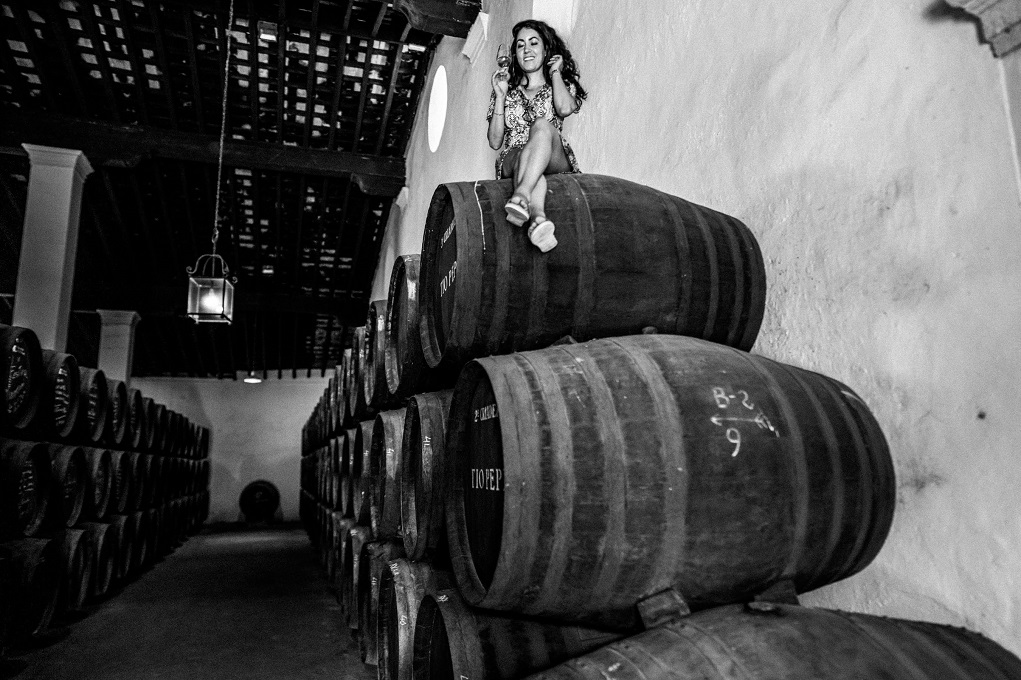Sherry has been making a comeback for years. Whereas we used to know the drink only from the bottle on our great-aunts' windowsill, today we see it popping up more and more often. Sherry in celebrity restaurants, Sherry in cocktails, Sherry pop-up bars and Sherry wine week. The climb to the top is not without controversy, every few years a new trend comes and goes; the gin tonic, the orange wine, the IPA. Once Sherry has captured your heart, however, you won't want to drink anything else at all. Nice to know that there is a Sherry for every mood, opportunity and meal. - TEXT INDIA DONISI @WINESPICEGIRL| IMAGE TONY PEREZ
Sherry has a very rich history
Sherry is not just another drink. It is a wine with an impressive history and culture. In 1100 BC, the Phoenicians brought vines to Xera the forerunner of the city of Jerez. The wines produced here travelled by ship throughout the Mediterranean. In 711, the area was conquered by the Moors who named it the Sherish gifts. In the 12th century, Henry I of England proposed a barter deal to Jerez: English wool in exchange for Sherish wine. From then on, vineyards were canonised; no vine was allowed to be uprooted.
In the centuries that followed, the popularity of wines from Jerez continued to grow. Markets like America and India joined in. The works of Shakespeare also clearly show how much Sherry was loved. His character Falstaff proclaimed in one of his works: "If I had a thousand sons, the first humane principle I would teach them should be, to forswear thin potations and to addict themselves to sack!" Sherris sack was the common word for Sherry.
Until the eighteenth century, the wines exported as Sherry were very different from those we know today. With the growing demand for wines that could survive long journeys at sea, wines were fortified from the eighteenth century onwards. To provide consistent quality, wines from different vintages were blended and left to mature for years. This gave rise to the Solera system for which the Sherry region is so well known today.

Sherry combines with the most difficult flavours
Few wines can handle everything when it comes to food and there are many flavours that will give any wine-food freak nightmares. Hard-to-match ingredients like sushi, blue cheeses, asparagus and dark chocolate require great creativity when incorporated into a menu. The variety of Sherry wines has an answer to all these tricky issues. Dry Sherry like Fino and Manzanilla go perfectly with sushi and raw fish dishes. Palo Cortado goes well with complex cheeses. Oloroso and asparagus? No problem at all. The nutty character of asparagus is picked up and enhanced. With dark chocolate, go for sweet Moscatel or Pedro Ximénez.
Sherry is packed with culture
Close your eyes for a moment. Think of a magical city where the bodegas look like cathedrals. High ceilings with tiny windows letting in filtered sunlight. Sandy floors, wooden barrels stacked metres high containing traces of pre-war wine. In the bodega, you escape the heat of the streets. It is cool and humid, a constant temperature. Time stands still. The *venenciador scoops wine from the top of a barrel and with a swaggering motion pours Sherry into your glass from a metre high.
The wine gets a kick from contact with oxygen and comes alive in your glass. Aromas of freshly baked bread, salty almonds and Mediterranean spices. A sip, savoury and crisp, salivating and thirst-quenching. A female voice begins to sing, flamenco music swells in the background. You take a seat at a small table in a brown pub. Half a bottle of ice-cold Fino is placed in front of you, glasses, a plank of Jamon Iberico. The show can begin. The voices get louder, there is clapping, guitar playing, wild dancing and stomping on the floor.
You see, Sherry is not just a drink. It's a lifestyle! Olé!
*The venenciador is the cellar master who takes a little Sherry from the barrel with an instrument called a venencia and fills the copita, the tasting glass, with it.

About the Consejo Regulador
The Supervisory Board of the D.O. Vinos de Jerez (Sherry Wines), known as the Consejo Regulador, was the first to publish the regulations for a designation of origin in 1935. This is why we refer to "Jerez-Xérès-Sherry" and "Manzanilla-Sanlúcar de Barrameda" as the oldest designations of origin (D.O.) in Spain. Within the Sherry area, another product is "Sherry vinegar". It too has been protected by a designation of origin (P.D.O.) since 1994. The Consejo Regulador that protects these three designations brings together 1,750 wine growers and around 100 wineries, located in the so-called "Marco de Jerez" in the province of Cadiz. They are all responsible for the management, control and quality of all wines. This guarantees the quality of the respective regional products for the consumer market.
The work of the Consejo Regulador has brought these D.O.P.'s international recognition. These are wines of extraordinary variety and real character, with a very long export tradition and brands that represent true Spanish icons around the world. This campaign is funded with support from the European Union.


Don't want to miss a single edition? Subscribe then subscribe to Winelife Magazine now!
Want to stay up to date with the best articles? Follow Winelife magazine on Instagram, Facebook and sign up for our fortnightly newsletter.





